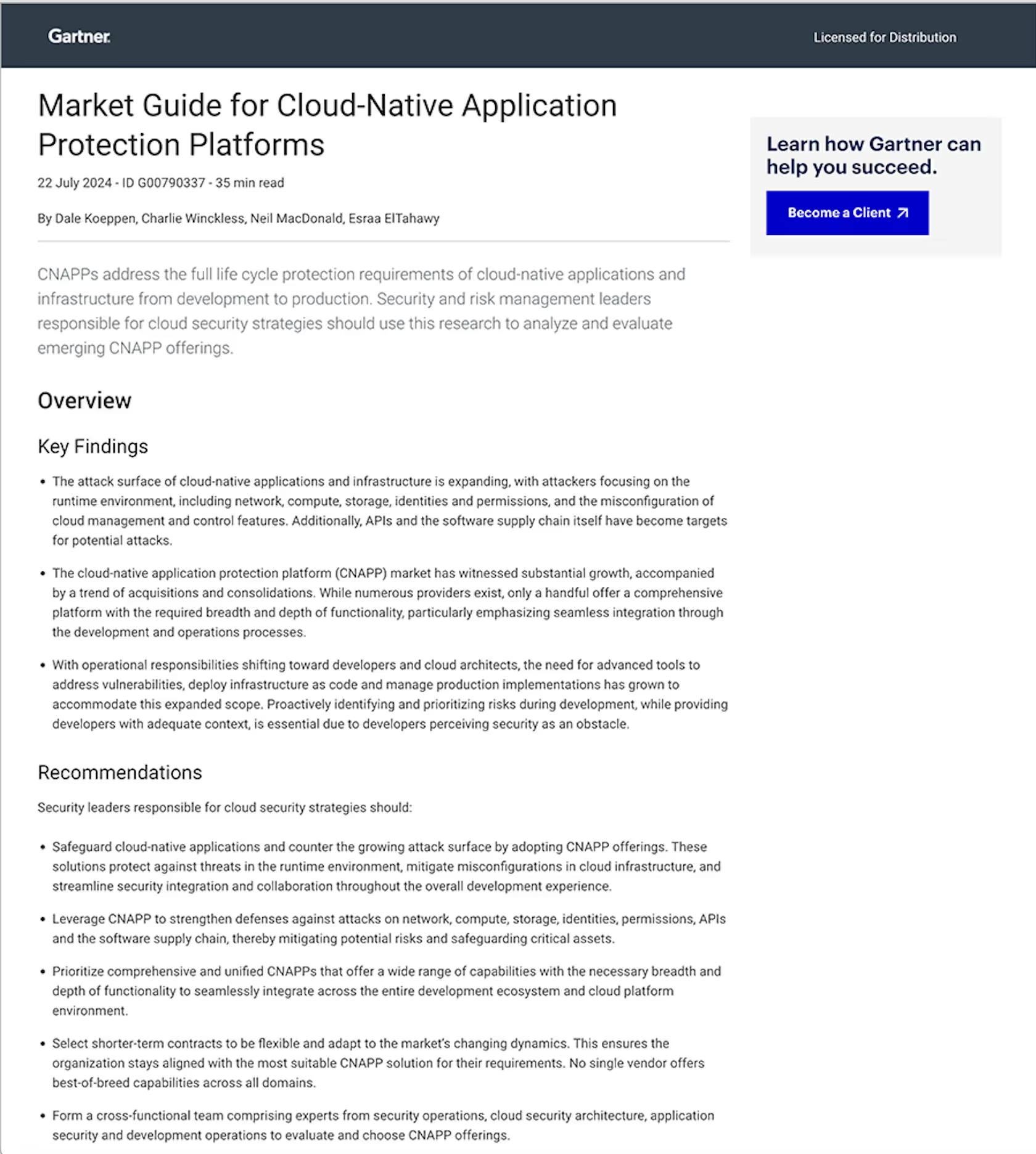In the cloud, every second counts
You need real-time security to move at cloud speed
One-trick security tools add to the operational burden, increase costs, and create gaps that attackers can exploit.
Buried under a mountain of alerts, security teams lack the visibility and context to effectively prioritize critical risks in real time.
Adversaries are exploiting AI and automation to execute attacks faster than security teams can detect and respond to them.
With Sysdig, you can move faster and focus on what matters most to your business
Unify security capabilities to break down silos. Sysdig provides continuous visibility into your entire cloud estate and uses the power of runtime insights to help you stop attacks across the entire application life cycle.
Protect your business without slowing it down. Sysdig’s CNAPP reveals the whole picture, helping you pinpoint active risks with precision, uncover hidden attack paths, and prioritize the most urgent tasks for your team.
Outpace attackers with AI-powered security. Accelerate your ability to detect, investigate, and respond with Sysdig Sage™, the first ever cloud security AI analyst with real conversational skills.
The value of CNAPP
3 ways CNAPP secures innovation in the cloud
The only cloud-native security platform powered by runtime insights
Risk prioritization
Runtime insights uses the knowledge of what’s in use to help you zero in on the most urgent security issues. Know when a risk is truly critical and needs remediation.
Real-time threat detection
Sysdig’s multilayered threat detection combines machine learning, drift control, and open-source Falco rules to detect threats in seconds. Effective real-time detection requires granular visibility across Linux and Windows servers, containers and Kubernetes, cloud logs and trails, and serverless functions.
AI-powered with Sysdig Sage
Powered by an autonomous agents architecture, Sysdig Sage employs multistep reasoning and contextual awareness to accelerate the resolution of complex cloud attacks.
A unified view of all cloud risks and threats
Cloud Attack Graph automatically correlates assets, activity, and risks across domains to uncover hidden attack paths and accelerate incident detection and response.
Cloud security posture management
Identify, prioritize, and mitigate active cloud risks across multicloud environments.
Vulnerability management
Prioritize the most critical risks and reduce vuln noise.
Cloud workload protection
Unify server workload protection in the cloud.
Cloud detection and response
Get the visibility, context, and real-time security capabilities to stop advanced attacks.
2025 Gartner® Market Guide for Cloud-Native Application Protection Platforms

